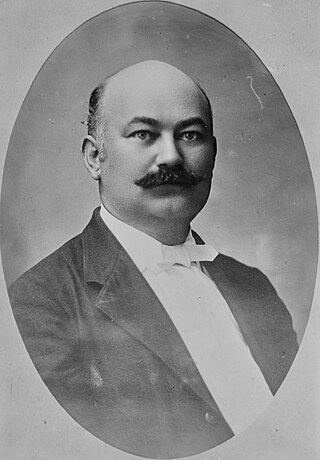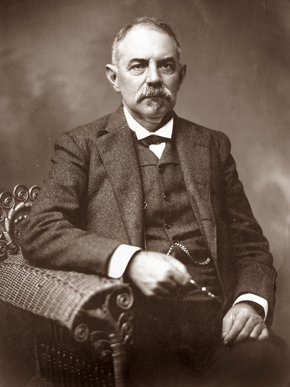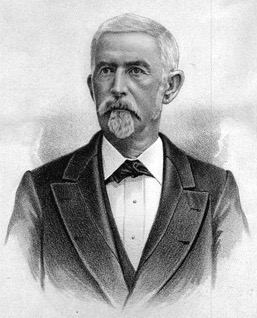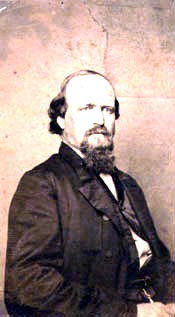| |||||||||||||||||
| |||||||||||||||||
 County results Seay: 50–60% 60–70% 70–80% 80–90% >90% Bingham: 50–60% 60–70% 70–80% No Data | |||||||||||||||||
| |||||||||||||||||
The 1886 Alabama gubernatorial election took place on August 2, 1886, in order to elect the governor of Alabama.
| |||||||||||||||||
| |||||||||||||||||
 County results Seay: 50–60% 60–70% 70–80% 80–90% >90% Bingham: 50–60% 60–70% 70–80% No Data | |||||||||||||||||
| |||||||||||||||||
| Elections in Alabama |
|---|
 |
The 1886 Alabama gubernatorial election took place on August 2, 1886, in order to elect the governor of Alabama.
| Party | Candidate | Votes | % | |
|---|---|---|---|---|
| Democratic | Thomas Seay | 145,095 | 79.43 | |
| Republican | Arthur Bingham | 36,793 | 20.14 | |
| Prohibition | John T. Tanner | 576 | 0.32 | |
| Other | Write-ins | 204 | 0.11 | |
| Total votes | 182,668 | 100.00 | ||
| Democratic hold | ||||

George Corley Wallace Jr. was the 45th governor of Alabama, serving from 1963 to 1967, again from 1971 to 1979, and finally from 1983 to 1987. He is remembered for his staunch segregationist and populist views; however, in the late 1970s, Wallace moderated his views on race, renouncing his support for segregation. During Wallace's tenure as governor of Alabama, he promoted "industrial development, low taxes, and trade schools." Wallace unsuccessfully sought the United States presidency as a Democratic Party candidate three times, and once as an American Independent Party candidate, carrying five states in the 1968 election. Wallace opposed desegregation and supported the policies of "Jim Crow" during the Civil Rights Movement, declaring in his infamous 1963 inaugural address that he stood for "segregation now, segregation tomorrow, segregation forever".

William Woodward Brandon was an American Democratic politician who was the 37th governor of Alabama from 1923 to 1927.

Charles Henderson was an American businessman serving as the 35th Governor of Alabama from 1915 to 1919 and a member of the Democratic Party. Before serving as governor, Henderson was mayor of Troy, Alabama from 1886 to 1906 and played a role in Troy's business and civic development. After his term as governor, Henderson remained active in the community. In 1937, after a bout with influenza, Henderson suffered a stroke and died at age 76. The public high school and middle school in Troy bear his name.

Emmet O'Neal was an American Democratic politician and lawyer who was the 34th Governor of Alabama from 1911 to 1915. He was a reformer in the progressive mold and is best known for securing the commission form of government for the cities of Alabama.

Thomas Goode Jones was an Alabama lawyer, politician, and military officer. He served in the Alabama legislature and as Governor of Alabama. He later became United States district judge of the United States District Court for the Middle District of Alabama and the United States District Court for the Northern District of Alabama.

Edward Asbury O'Neal was a Confederate officer during the American Civil War and the 26th Governor of Alabama.

The United States District Court for the Northern District of Alabama is a federal court in the Eleventh Circuit.
Thomas J. Seay was an American Democratic politician who was the 27th Governor of Alabama from 1886 to 1890.
Events from the year 1829 in the United States.

Events from the year 1831 in the United States.

The lieutenant governor of Alabama is the president of the Alabama Senate, elected to serve a four-year term. The office was created in 1868, abolished in 1875, and recreated in 1901. According to the current constitution, should the governor be out of the state for more than 20 days, the lieutenant governor becomes acting governor, and if the governor dies, resigns or is removed from office, the lieutenant governor ascends to the governorship. Earlier constitutions said the powers of the governor devolved upon the successor, rather than them necessarily becoming governor, but the official listing includes these as full governors. The governor and lieutenant governor are not elected on the same ticket.

Edward Hawthorne Moren was the second Lieutenant Governor of Alabama. A Democrat, Moren served Governor Robert Burns Lindsay of the same political party, from 1870 to 1872.

Lincoln Clark was a lawyer and one-term Democratic U.S. Representative from Iowa's 2nd congressional district. His life began and ended in the same small town in western Massachusetts, but included service in every branch of Alabama state government, the U.S. Congress, and the Iowa General Assembly.

Kay Ellen Ivey is an American politician who is the 54th governor of Alabama, serving since 2017. Originally a conservative Southern Democrat, Ivey became a member of the Republican Party in 2002. She was the 38th Alabama state treasurer from 2003 to 2011 and the 30th lieutenant governor of Alabama from 2011 to 2017.

The 2010 Alabama gubernatorial election took place on November 2, 2010. Incumbent Governor Bob Riley was term-limited and unable to seek re-election. The party primaries were held on June 1, 2010, with a Republican runoff on July 13. In the general election, Robert J. Bentley defeated Democrat Ron Sparks. This was the first election in which Republicans won three consecutive gubernatorial elections in the state. This was also the first time since Reconstruction that a Republican carried Colbert County, Franklin County, and Lawrence County in a gubernatorial race.
Events from the year 1886 in the United States.

The 2018 Alabama gubernatorial election took place on November 6, 2018, to elect the governor of Alabama. Incumbent Governor Kay Ivey (R), who took office on April 10, 2017 upon the resignation of Robert Bentley (R), ran for election to a full term and won over Tuscaloosa mayor Walt Maddox. Ivey was sworn in for her first full term on January 14, 2019. This was the first time since 1966 that a woman was elected governor of Alabama.

The 2022 Alabama gubernatorial election took place on November 8, 2022, to elect the governor of Alabama. Incumbent Governor Kay Ivey took office on April 10, 2017, upon the resignation of Robert J. Bentley (R) and won a full term in 2018. In 2022, she won her bid for a second full term in a landslide.

The 2022 Alabama lieutenant gubernatorial election was held on November 8, 2022, to elect the lieutenant governor of the state of Alabama. The election coincided with various other federal and state elections, including for Governor of Alabama. Primary elections were held on May 24, with runoffs scheduled for June 21 if a candidate failed to receive a majority of the vote.